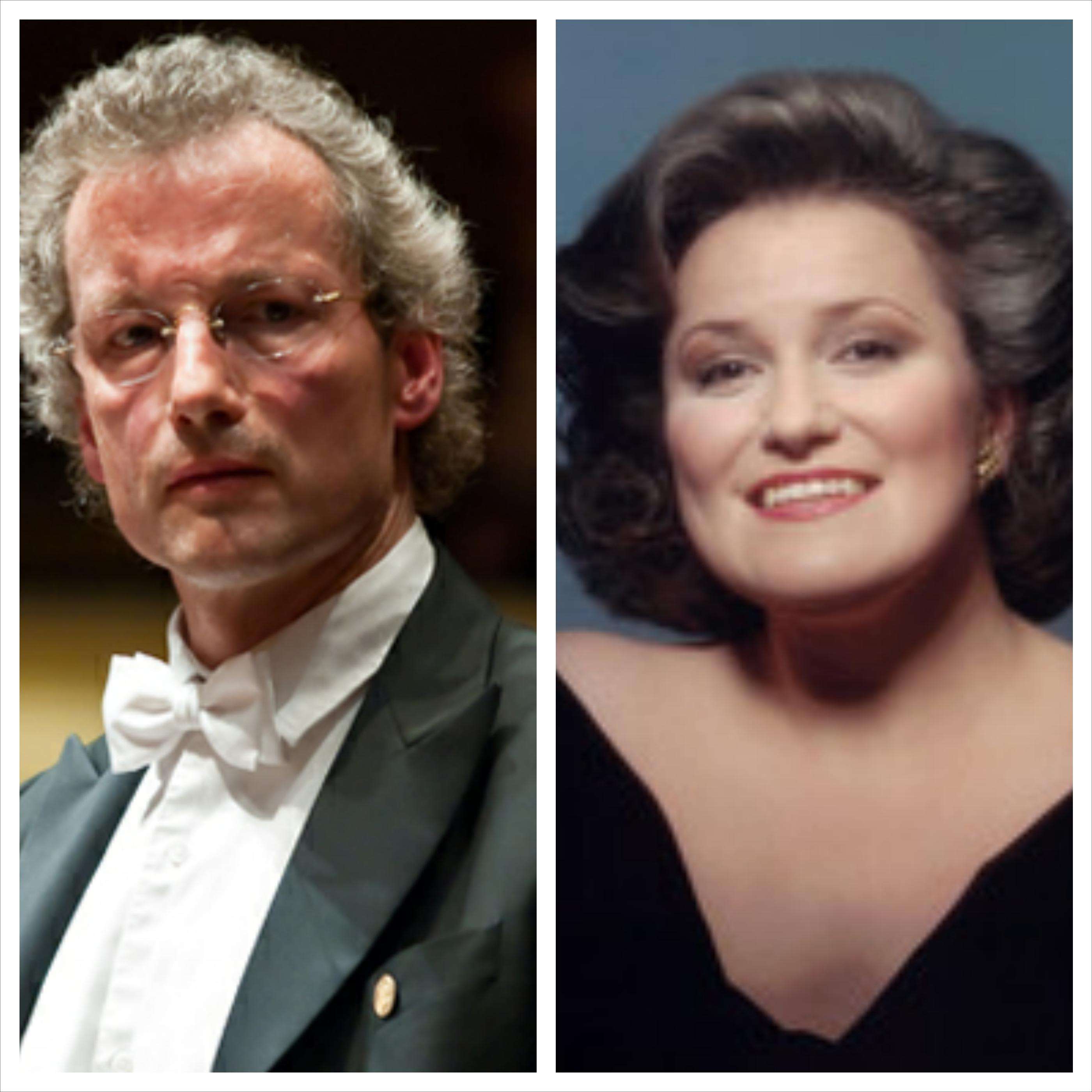|
Back
The Holy Trinity Inspiration New York
Avery Fisher Hall, Lincoln Center
11/04/2013 - & November 2, 2013 (Cleveland)
White Light Festival: “The Divine Presence”
Olivier Messiaen: Trois petites liturgies de la présence divine
Ludwig van Beethoven: Grosse Fuge in B-flat Major for string orchestra, opus 133 – Mass in C Major, opus 86
Luba Orgonásová (Soprano), Kelley O’Connor (Mezzo-soprano), Herbert Lippert (Tenor), Ruben Drole (Bass-baritone), Joela Jones (Piano), Cynthia Millar (Ondes Martenot)
Cleveland Orchestra Chorus, Robert Porco (Director), The Cleveland Orchestra, Franz Welser-Möst (Conductor)

F. Welser-Möst/L. Orgonásová (© Stephanie Berger/KranichPhoto)
The annual White Light Festival would shy away from a connventional religion. But last night, the Cleveland Orchestra’s program under Franz Welser-Möst embraced and encapsulated the Catholic Holy Trinity.
The Father (Beethoven’s Mass, authoritative, direct, assured, sire of the community); The Son (Messiaen’s Liturgies, fervent, emotional, physical, sensual); and The Holy Spirit (Beethoven’s Great Fugue, the mathematical laws, the inner animation, the inexpressible essence of our universal inner divinity).
Yes, all three works approached the White Light differently, yet the three were indeed One. Or would have been one, had the White Light Festival Committee deemed no intermission, and no applause between the works. It would have taken some imaginative staging, yes. But the effect might have indeed been more a spiritual experience rather than “a concert”.
Never mind that. The Cleveland Orchestra’s present conductor has been controversially reputed as something of a dictator, though his authority is nothing next to the man who shaped this ensemble for eternity, George Szell. Thus, it was hardly a surprise that the Maestro kept his forces firmly in check. He had three totally different aggregates to deal with, and all demanded a different approach for success.
His straightforward position to the Beethoven C Major Mass was perhaps too stolid for comfort. While Haydn was apparently the inspiration (it was performed at the Esterházy Palace), the opening Kyrie was could well have been inspired by the opening of the Mozart Requiem. Beethoven’s unfolding of the theme was conducted with businesslike precision, leading to a stately performance up to the final Agnus Dei.
To their credit, all four ensemble soloists (few solos) were equally stately, and the Cleveland Orchestra Chorus were majestic enough in the blazing Gloria and the propulsive Credo. It was more than adequate, the orchestra played faultlessly.
Yet something was wrong. This was mainly Beethoven the great artisan, creating a solid work from small pieces. But the opening moments are so heavenly that the composer had to repeat them, in the last measures. Mr. Welser-Möst somehow let those glorious measures drift pass. The result was an impressive Beethoven with impressive forces, with mere shadows of the ethereal.
The Mass is Beethoven at his most logical. The Grosse Fuge is not logical at all. Thus–thinking in White Light terms–only a “leapof faith” makes it work. Most 300-year-old may have started with insults (“It sounds Chinese,” said one critic of the time), but we laugh at such comments today. Not, though, the Great Fugue, which is still as puzzling, abstruse now as it was then.
Still, this was the White Light Festival, so we try to see its Divine Guidance, its composition, a kind of automatic writing not always making sense.
Yet that is its glory, its puzzlement. As the finale of a string quartet, the piece is fearfully enigmatic. The arrangement for string orchestra is never satisfactory. It slows down the music, the Cabaletta complexities become part of a mush rather than the abstract lines. Still, the strings of the Cleveland Orchestra are splendid, and some of slower sections showed a special sheen.
My own nomination for the most spiritual, divine, and frankly bizarre moments last night were in the opening Messiaen Three Liturgies of the Divine Presence. The ensemble was for woman’s chorus, reduced string orchestra, celesta, vibraphone, maracas, Chinese cymbal and the ondes Martenot, the very first electronic instrument, which was behind virtually every horror movie of the 1940’s.
To me, the glory of the sounds was echoed by the fine English translation of Messiaen’s words, which had caused a scandal when first heard. It was partly Baudelaire (the “blue trumpet”, the “sun of blood, of birds”). It could have been Gerard Manley Hopkins stoned on opium. Or it could have come from the hallucinations of a quantum physicist. (“All encompassing in all places... bestowing existence upon each place on all that occupies a place...in these spaces and times that you created...”)
Franz Welser-Möst conducted the women with gentleness and affection, the combination of piano, marimba, celesta, piano and ondes martenot with the string orchestra was the color of clouds in an azure sky.
If I had my druthers, I’d have put the Mass first, then the Great Fugue and finally, without a break, the heavenly adoration, from Messiaen’s illuminations, of a most blessed heaven.
Harry Rolnick
|